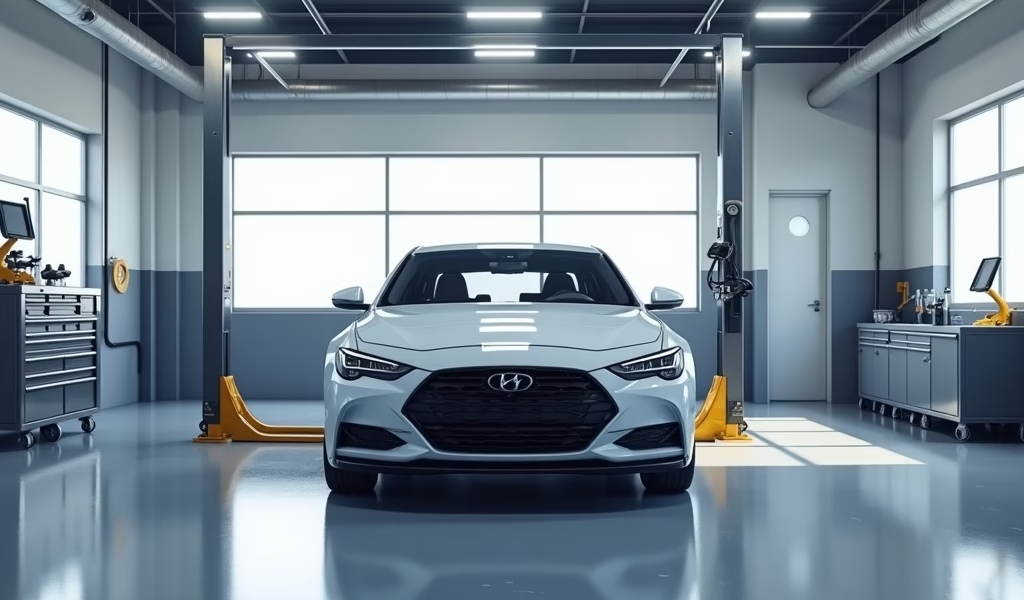Overview
The article presents five maintenance hacks for 2021 vehicle owners, including leveraging digital service records, performing DIY oil changes, optimizing tire maintenance, managing battery systems properly, and using OBD-II diagnostic tools to prevent costly repairs. These techniques help owners extend vehicle life, improve reliability, and save thousands of dollars over time without requiring professional assistance for most basic maintenance tasks.
Table of Contents
- Introduction to New Cars for Sale 2021
- Hack #1: Leverage Digital Service Records
- Hack #2: Mastering the DIY Oil Change for 2021 Models
- Hack #3: Optimizing Tire Maintenance for Longevity
- Hack #4: Smart Battery Management Techniques
- Hack #5: Utilizing OBD-II Technology to Your Advantage
- Conclusion: Maximizing Your 2021 Vehicle Investment
- Frequently Asked Questions
Introduction to New Cars for Sale 2021
So you’ve got your eye on one of those shiny new cars for sale 2021 models, huh? Smart move. The 2021 lineup brings some impressive tech, better fuel efficiency, and slicker designs than ever before. But here’s the thing – even the newest rides need proper care to keep them purring like they did on day one.
After 20 years of turning wrenches and diagnosing everything from temperamental transmissions to finicky fuel systems, I’ve seen firsthand how a little know-how can save car owners thousands. The best part? Many of these service hacks are simpler than you might think.
Today’s 2021 models are rolling computers with wheels, which means service strategies have evolved too. If you’re looking for cars with zero financing options or already have a new ride, these five service hacks will help you protect that investment without breaking the bank or wasting your Saturday at the dealership.
Let’s dive into these game-changing service tricks that’ll keep your 2021 vehicle running smoother, longer, and with fewer trips to the repair shop. Trust me – your wallet (and future self) will thank you.
Hack #1: Leverage Digital Service Records
Remember those bulky owner’s manuals and maintenance booklets that used to crowd your glove compartment? The 2021 models have largely ditched that approach. Most new cars for sale 2021 come with sophisticated digital service tracking systems that are seriously underutilized by most owners.
Here’s the insider tip: download your vehicle’s dedicated app. Nearly every major manufacturer from Toyota to Mercedes now offers companion apps that do way more than just unlock your doors. These apps track maintenance intervals with precision based on your actual driving habits – not just arbitrary mileage.
I recently helped a customer who thought her 2021 Hyundai needed an oil change based on the old “every 3,000 miles” rule. When we checked her app, we discovered she had another 2,000 miles to go before it was necessary. The digital system had adjusted based on her primarily highway driving pattern, saving her time and money.
Beyond maintenance reminders, these apps store your complete service history in the cloud. This creates an ironclad record that substantially boosts resale value when it’s time to upgrade. According to Kelley Blue Book research, vehicles with complete digital service records can command 5-10% higher resale values.
To get started:
- Download your manufacturer’s official app (not third-party ones)
- Complete the registration using your VIN number
- Enable notifications for maintenance alerts
- Upload any service records from work done outside the dealership
This simple step creates a personalized maintenance schedule that’s optimized for how you actually use your vehicle, not generic recommendations. It’s like having a mechanic who knows exactly when your car needs attention – without the hourly rate.

Hack #2: Mastering the DIY Oil Change for 2021 Models
Now, I know what you’re thinking – oil changes are old news. But the 2021 lineup has some specific quirks worth knowing about. Many new cars for sale 2021 have extended oil change intervals thanks to synthetic oils and improved engine design. However, this doesn’t mean maintenance gets simpler.
The real hack here is understanding that different driving conditions still dramatically affect oil life, even in these advanced engines. If you’re doing lots of short trips where the engine never fully warms up or facing extreme temperatures, your oil degrades faster than the manufacturer’s optimistic estimates suggest.
For those brave souls willing to do their own oil changes (and seriously, it’s not that scary), here’s what’s changed for 2021 models:
- Many new models have relocated oil filters for easier access – check under the hood before assuming you need to crawl underneath
- Electronic oil life monitors need resetting after changes (usually a specific sequence of pedal pumps or button presses)
- Modern engines often require specific viscosity synthetic oils that might differ from what you’re used to
A client with a 2021 Ford Escape was spending $85 every time at the quick lube place. I showed her how to do it herself for about $35 in materials. The process took 20 minutes, and she’s now saving $200 annually. Those looking for zero percent financing car deals can put those savings toward their monthly payments.
One crucial warning: many 2021 models have plastic engine covers and undertray panels that require specific removal procedures. Skip the YouTube university approach and grab the actual service manual for your specific model. Most manufacturers now provide these online, often free for registered owners.
Proper disposal matters too – collect your used oil in a sealed container and drop it at an auto parts store that accepts recycling. It’s the right thing to do, and many places like AutoZone or Advance Auto Parts offer this service for free.
Hack #3: Optimizing Tire Maintenance for Longevity
Tires are the only part of your car that actually touches the road, and yet they’re often the most neglected component. With new cars for sale 2021, manufacturers have integrated tire pressure monitoring systems (TPMS) as standard equipment, but there’s a trick to using them effectively that most owners miss.
The hack is this: the TPMS warning light typically only activates when pressure drops 25% below recommended levels – by which point you’ve already compromised fuel economy and handling. Instead, check your tire pressure monthly using a quality gauge ($10-15 at any auto store), and do it when the tires are cold for an accurate reading.
2021 models have another tire quirk – many come with low-rolling-resistance tires for better fuel economy. These tires can wear unevenly if not rotated properly, and rotation patterns matter more than ever. The cross-rotation pattern that worked on your old car might not be right for your new vehicle.
Here’s a quick tire maintenance schedule that’ll double the life of your rubber:
- Check pressure monthly (including the spare)
- Rotate tires every 5,000-7,000 miles following the pattern in your owner’s manual
- Check alignment if you notice uneven wear or if the vehicle pulls to one side
- Clean tire sidewalls when washing your car (protects from premature cracking)
One client with a 2021 Mazda CX-5 was getting just 25,000 miles from a set of tires until we implemented this maintenance schedule. Their next set lasted over 50,000 miles – a savings of nearly $800. For those shopping for 0 APR cars, these savings represent real value over the life of your vehicle.
Another pro tip: consider investing in a set of dedicated winter tires if you live in a snow belt region. Modern all-season tires have sacrificed some winter performance for better fuel economy. According to Consumer Reports testing, dedicated winter tires can reduce braking distances by up to 30% in snow conditions compared to all-seasons.
Hack #4: Smart Battery Management Techniques
The battery technology in new cars for sale 2021 has evolved significantly. Most models now use absorbed glass mat (AGM) batteries instead of traditional lead-acid designs. These batteries power not just the starter but dozens of complex electronic systems that run even when the vehicle is off.
Here’s where many owners go wrong: treating these sophisticated power systems like old-school batteries. Modern vehicles constantly draw power for systems like security, computer memory, and remote connectivity – what we call “parasitic draw.” This is perfectly normal, but it means leaving your 2021 vehicle undriven for extended periods can lead to surprising battery depletion.
The hack? For vehicles that sit unused for weeks (like during vacation), consider a smart battery maintainer. These devices, ranging from $25-75, keep your battery at optimal charge without the risk of overcharging. Unlike old trickle chargers, modern maintainers use microprocessors to monitor and adjust charging rates automatically.
I helped a client with a 2021 Subaru Outback that wouldn’t start after sitting at the airport for two weeks. The sophisticated electronics had drained the battery below the threshold needed to start. A quality battery maintainer would have prevented this $200 roadside service call.
If you’re not ready to invest in a maintainer, at least follow these battery preservation tips:
- For extended storage (2+ weeks), disconnect the negative battery terminal
- Keep the battery terminals clean with a wire brush and baking soda solution
- Ensure your alternator is charging properly (most auto parts stores will check this free)
- Avoid using electronics like the sound system for extended periods while the engine is off
One final note: replacing batteries in 2021 models often requires computer reprogramming. Many newer vehicles need to “learn” that a new battery has been installed, which might require a scan tool or dealer visit. Factor this into your DIY plans if you’re considering replacing your own battery.

Hack #5: Utilizing OBD-II Technology to Your Advantage
Every new car for sale 2021 comes equipped with an OBD-II (On-Board Diagnostics) port that’s essentially the gateway to your vehicle’s brain. While most people only interact with this system when a check engine light appears, there’s a gold mine of preventative maintenance information accessible through this port.
The hack is investing in an OBD-II scanner that connects to your smartphone. Basic models start around $25, with more advanced options in the $100 range. These devices allow you to read and clear trouble codes, but more importantly, they let you monitor real-time data from dozens of sensors throughout your vehicle.
I recently worked with a client whose 2021 Honda Accord was experiencing slight hesitation during acceleration. Before any warning lights appeared, we connected an OBD scanner and discovered the mass airflow sensor was reporting inconsistent readings. A simple cleaning solved the problem before it escalated into a costlier repair.
Here’s how to leverage OBD-II technology effectively:
- Perform periodic system scans even when no warning lights are present (many issues lurk below the threshold for triggering the check engine light)
- Monitor fuel trim values to catch efficiency issues early
- Check battery voltage and charging system performance
- Record data during a drive if you notice intermittent issues
According to RepairPal’s repair cost estimator, catching issues at the warning stage rather than after component failure saves an average of 30-40% on repair costs. For complex 2021 models with integrated systems, this early detection becomes even more valuable.
A word of caution: while these tools make diagnosis accessible, resist the urge to start replacing parts based solely on codes without understanding the underlying cause. Codes are clues, not definitive diagnoses. Use forums specific to your vehicle model and consult with professionals when needed.
Conclusion: Maximizing Your 2021 Vehicle Investment
Taking care of your new car isn’t just about preserving its value – it’s about enjoying a smoother, more reliable driving experience while avoiding those unexpected repair bills that always seem to come at the worst possible time. The new cars for sale 2021 represent some of the most technologically advanced vehicles ever mass-produced, but they still need proper care and maintenance.
By implementing these five service hacks – leveraging digital records, understanding modern oil change requirements, optimizing tire maintenance, properly managing battery systems, and utilizing OBD-II technology – you’re setting yourself up for thousands in savings over the life of your vehicle.
Remember that modern vehicles are sophisticated systems where one component affects many others. This interconnection means preventative maintenance has never been more important or more cost-effective than with 2021 models.
Whether you purchased your new ride with traditional financing or took advantage of special promotions, these maintenance strategies will help protect what is likely one of your largest investments. The small time investment these hacks require pays dividends in extended vehicle life, improved reliability, and significant cost savings.
So go ahead – enjoy that new car smell a little longer, and drive with confidence knowing you’re maintaining your 2021 vehicle the smart way.
Frequently Asked Questions
What’s different about maintaining a 2021 model compared to older vehicles?
2021 models have more electronics, longer maintenance intervals, and often require specific synthetic fluids. They also typically feature digital maintenance tracking systems and more complex diagnostic procedures that leverage onboard computers.
Do new cars for sale 2021 really need synthetic oil?
Yes, most 2021 models specifically require synthetic oil to maintain warranty coverage and proper engine protection. Synthetic oil better handles the higher temperatures and tighter tolerances in modern engines while extending change intervals.
Can I still do DIY maintenance on new cars with all their technology?
Absolutely! Many basic maintenance tasks remain DIY-friendly, though you might need model-specific information and occasionally specialized tools. The service hacks outlined above are specifically designed for owner-level maintenance.
How often should I rotate tires on my 2021 vehicle?
Most manufacturers recommend tire rotation every 5,000-7,000 miles for 2021 models. Check your specific owner’s manual as some vehicles with different front/rear tire sizes or certain AWD systems have unique requirements.
Will using aftermarket parts void my new car warranty?
Using quality aftermarket parts for maintenance will not void your warranty under the Magnuson-Moss Warranty Act. However, if an aftermarket part causes damage, that specific damage may not be covered, so stick with OEM or equivalent quality parts.

